Nanotechnology: Review, Brief History and It's Industrial Applications

Nanotechnology ("nanotech") is manipulation of matter on an atomic, molecular, and supramolecular scale. The earliest, widespread description of nanotechnology referred to the particular technological goal of precisely manipulating atoms and molecules for fabrication of macroscale products, also now referred to as molecular nanotechnology. A more generalized description of nanotechnology was subsequently established by the National Nanotechnology Initiative, which defines nanotechnology as the manipulation of matter with at least one dimension sized from 1 to 100 nanometers.
Imagine if you climbed out of the shower only to discover you'd shrunk in the wash by about 1500 million times! If you stepped into your living room, what you'd see around you would not be chairs, tables, computers, and your family but atoms, molecules, proteins, and cells. Shrunk down to the "nanoscale," you'd not only see the atoms that everything is made from—you'd actually be able to move them around! Now suppose you started sticking those atoms together in interesting new ways, like tiny LEGO® bricks of nature. You could build all kinds of fantastic materials, everything from brand new medicines to ultra-fast computer chips. Making new things on this incredibly small scale is called nanotechnology and it's one of the most exciting and fast-moving areas of science and technology today.
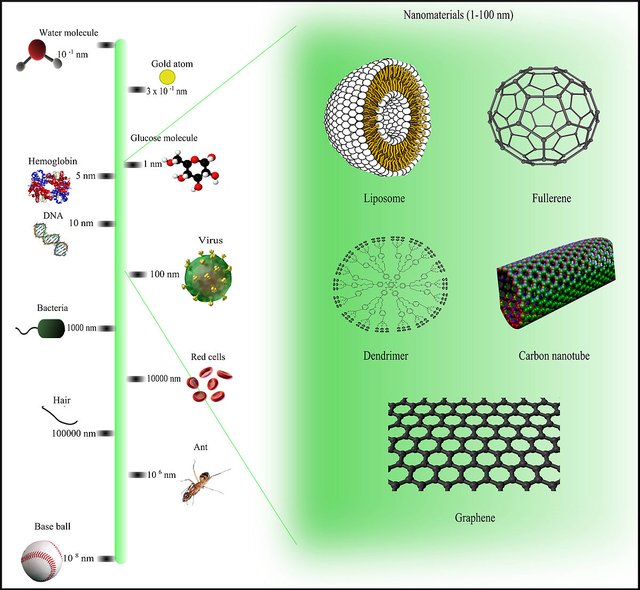
Comparison Of Nanomaterials Sizes
Nano means "billionth", so a nanometer is one billionth of a meter. In other words, the nanoscale is 1000 times smaller than the microscopic scale and a billion (1000 million) times smaller than the world of meters that we live in.
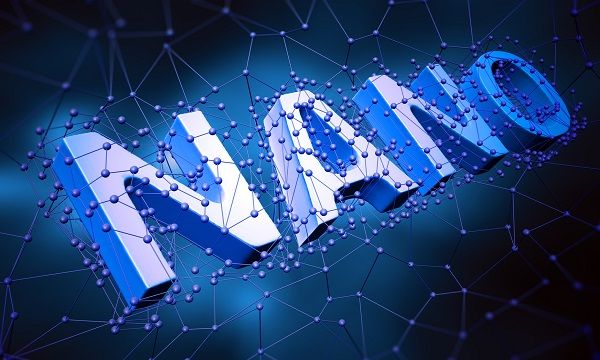
History Of Nanotechnology
Natural examples like this tell us that nanotechnology is as old as life itself, but the concept of the nanoscale, nanoscience we can study, and nanotechnology we can harness are all relatively new developments. The brilliant American physicist Richard Feynman (1918–1988) is widely credited with kick-starting modern interest in nanotechnology. In 1959, in a famous after-dinner speech called "There's plenty of room at the bottom," the ever-imaginative Feynman speculated about an incredibly tiny world where people could use tiny tools to rearrange atoms and molecules. By 1974, Japanese engineering professor Norio Taniguchi had named this field "nanotechnology."
Nanotechnology really took off in the 1980s. That was when nanotech-evangelist Dr K. Eric Drexler published his groundbreaking book Engines of Creation: The Coming Era of Nanotechnology. It was also the decade when microscopes appeared that were capable of manipulating atoms and molecules on the nanoscale. In 1991, carbon nanotubes were discovered by another Japanese scientist, Sumio Iijima, opening up huge interest in new engineering applications. The graphite in pencils is a soft form of carbon. In 1998, some American scientists built themselves another kind of pencil from a carbon nanotube and then used it, under a microscope, to write the words "NANOTUBE NANOPENCIL" with letters only 10 nanometers across.
Stunts like this captured the public imagination, but they also led to nanotechnology being recognized and taken seriously at the highest political levels. In 2000, President Bill Clinton sealed the importance of nanotechnology when he launched a major US government program called the National Nanotechnology Initiative (NNI), designed to fund groundbreaking research and inspire public interest. By 2016, the US government was investing over $1 billion a year in nanotechnology through the NNI alone. Nanotechnology reached another important milestone that year with the award of the 2016 Nobel Prize in Chemistry to Jean-Pierre Sauvage, Sir J. Fraser Stoddart, and Bernard Feringa, three scientists whose groundbreaking work had spawned the idea of turning molecules into machines.
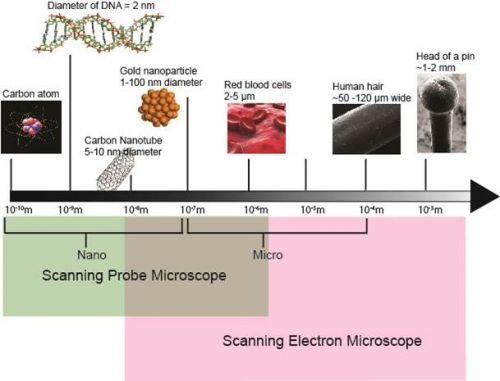
Scale of objects ranging from nanometers to microns
From Nanoscience To Nanotechnology
This is all very interesting and quite impressive, but what use is it? Our lives have some meaning on a scale of meters, but it's impossible to think about ordinary, everyday existence on a scale 1000 times smaller than a fly's eye. We can't really think about problems like AIDS, world poverty, or global warming, because they lose all meaning on the nanoscale. Yet the nanoscale—the world where atoms, molecules (atoms joined together), proteins, and cells rule the roost—is a place where science and technology gain an entirely new meaning.
By zooming in to the nanoscale, we can figure out how some of the puzzling things in our world actually work by seeing how atoms and molecules make them happen. You've probably seen that trick TV programs do with satellite photos, where they start off with a picture of the green and blue Earth and zoom in really fast, at ever-increasing scale, until you're suddenly staring at someone's back garden. You realize Earth is green because it's made from a patchwork of green grass. Keep zooming in and you'll see the chloroplasts in the grass: the green capsules inside the plant cells that make energy from sunlight. Zoom in some more and you'll eventually see molecules made from carbon, hydrogen, and oxygen being split apart and recombined inside the chloroplasts. So the nanoscale is good because it lets us do nanoscience: it helps us understand why things happen by studying them at the smallest possible scale. Once we understand nanoscience, we can do some nanotechnology: we can put the science into action to help solve our problems. That's what the word "technology" means and it's how technology (applied science) differs from pure science, which is about studying things for their own sake.
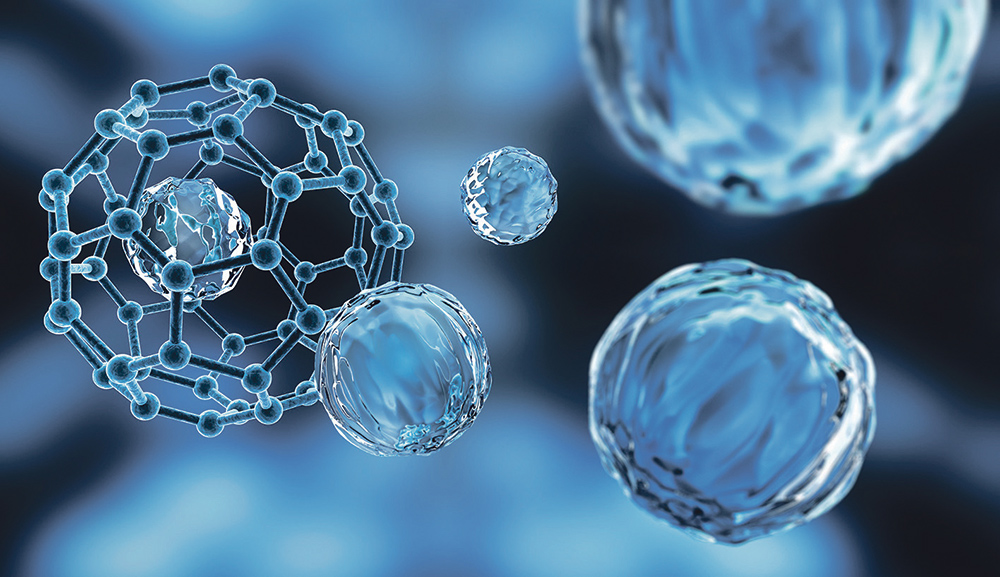
Application Of Nanotechnology
Most of nanotechnology's benefits will happen decades in the future, but it's already helping to improve our world in many different ways. We tend to think of nanotechnology as something new and alien, perhaps because the word "technology" implies artificial and human-made, but life itself is an example of nanotechnology: proteins, bacteria, viruses, and cells all work on the nanoscopic scale.
The 2000s have seen the beginnings of the applications of nanotechnology in commercial products, although most applications are limited to the bulk use of passive nanomaterials. Examples include titanium dioxide and zinc oxide nanoparticlesin sunscreen, cosmetics and some food products; silver nanoparticles in food packaging, clothing, disinfectants and household appliances such as Silver Nano; carbon nanotubes for stain-resistant textiles; and cerium oxide as a fuel catalyst. As of March 10, 2011, the Project on Emerging Nanotechnologies estimated that over 1300 manufacturer-identified nanotech products are publicly available, with new ones hitting the market at a pace of 3–4 per week.
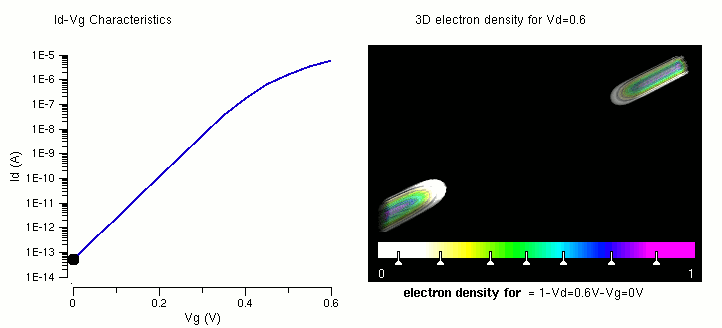
One of the major applications of nanotechnology is in the area of nanoelectronics with MOSFET's being made of small nanowires ≈10 nm in length. Here is a simulation of such a nanowire.
Nanotechnology is being used in developing countries to help treat disease and prevent health issues. The umbrella term for this kind of nanotechnology is Nanomedicine.
Nanotechnology is also being applied to or developed for application to a variety of industrial and purification processes. Purification and environmental cleanup applications include the desalination of water, water filtration, wastewater treatment, groundwater treatment, and other nanoremediation. In industry, applications may include construction materials, military goods, and nano-machining of nano-wires, nano-rods, few layers of graphene, etc. Also, recently a new field arisen from the root of Nanotechnology is called Nanobiotechnology. Nanobiotechnology is the biology-based, application-oriented frontier area of research in the hybrid discipline of Nanoscience and biotechnology with an equivalent contribution.
The Future For Nonotechnology
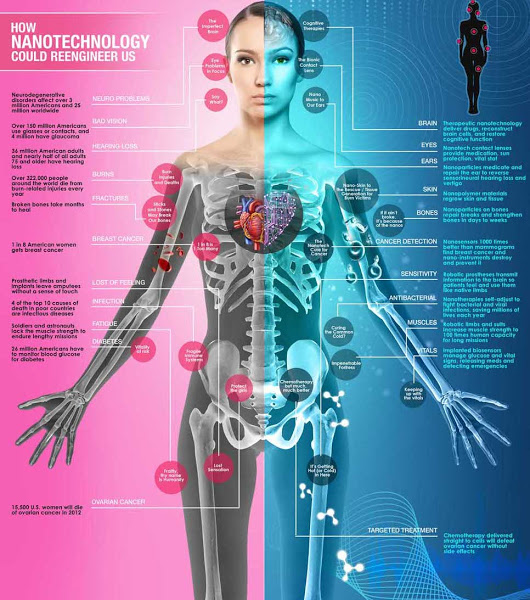
From cancer-detecting sensors to polymer materials that regrow burned skin, nanotechnology holds plenty of promise to fix human defects
Nanotechnology is expected to change the world by transforming biology, chemistry, computing, communications, engineering and materials science.
The big challenge is to understand the technology well enough to limit risks to the environment, health and safety. Humans don’t have a good track record of coming to terms with technology before it is implemented, and business people, rightly or wrongly, tend to focus on money-making first and foremost and leave “clean up” for future generations. Attempts to regulate nanotechnology and emerging fields like it are highly controversial as overregulation tends to strangle new ideas in their infancy.
References
1 2 3 4 5 6 7 8 9 10 11
Thanks for visiting my page.
Leave a comment below if you find the topic helpful. Don't forget to Upvote and Follow @jaybaba. Best Regards @jaybaba
